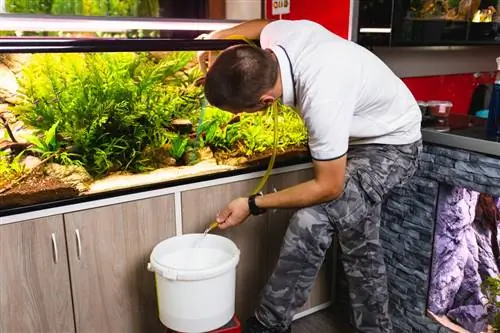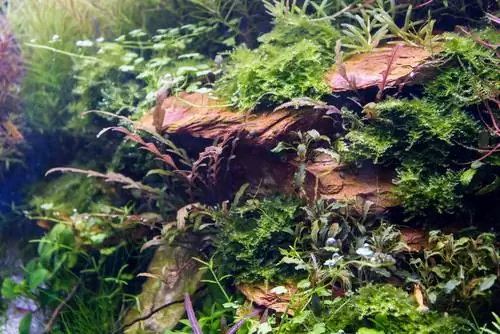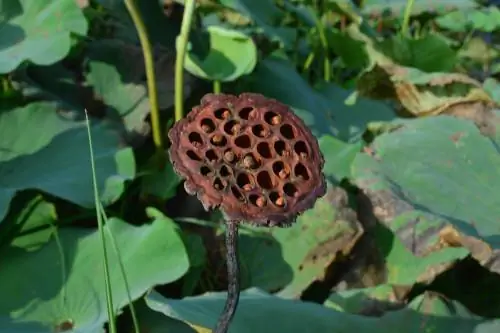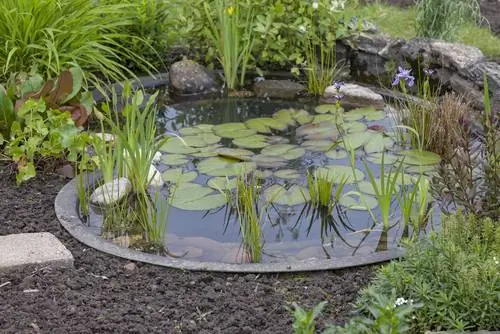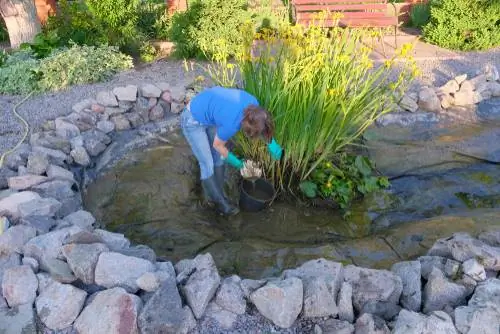- Author admin [email protected].
- Public 2023-12-16 16:46.
- Last modified 2025-01-23 11:21.
Well-maintained aquatic plants in the aquarium continuously release oxygen into the water and thus contribute to the purity and survival of the plant and animal inhabitants. In this article you will find out what is important when it comes to care.
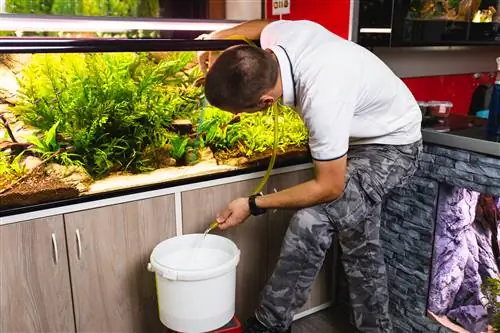
How do you care for aquatic plants in the aquarium?
In order to properly care for aquatic plants in the aquarium, attention should be paid to the following aspects: optimal substrate, soft water, regular water changes, fertilization, sufficient light and regular cutting of the plants.
The most important care measures for aquatic plants in the aquarium
The following points should be taken into account when caring for aquatic plants in the aquarium:
- Soil
- Water
- Water change
- Fertilization
- Light
- Cutting
Soil
Do not make the substrate too fine-grained so that the roots of the aquatic plants can be adequately supplied with nutrients and good ventilation is also ensured. Otherwise the roots will die and rot.
Recommendation: A grain size between three and eight millimeters is perfect.
The sensible layer structure at a glance:
- Soil long-term fertilizer (one to two centimeters)
- Aquarium gravel (lighter is better, darker robs a lot of light)
Water
Use soft water if possible. Many plants only cope poorly with hard water.
Water change
Change the water once a week to ensure fresh nutrients enter the aquarium.
Fertilization
Check regularly with an iron test whether your aquatic plants are sufficiently supplied. In principle: Too little fertilizer is just as harmful as too much fertilizer.
There are various fertilizers available from specialist retailers, such as liquid fertilizer or CO2 fertilizer with gas. However, beginners should avoid the latter as it requires a great understanding of chemical relationships.
Recommendation: For a smaller aquarium (up to 80 centimeters) you can use an easy-to-use organic CO2 set (€41.00 at Amazon).
Light
Aquatic plants in the aquarium need light for photosynthesis. However, you should avoid direct sunlight. Indirect sunlight and/or artificial light sources with a suitable spectrum are more suitable.
Note: Replace the fluorescent tubes after one year at the latest, as the luminosity decreases significantly over time.
Cutting
Short fast-growing aquatic plants regularly and remove dead plant parts from the aquarium.
Recommendation: You can replant the severed ends and grow new aquatic plants straight away.
General information on how aquatic plants thrive in the aquarium
Even under the best conditions, aquatic plants in the aquarium need time to thrive. After replanting, it takes around four to five weeks for the biological balance to be achieved. Once this is the case, the small water world appears largely stable, so that you hardly need to intervene other than regularly cleaning the water.

